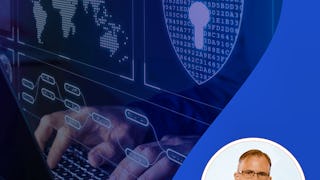With this beginner friendly course, learn fundamental Cybersecurity skills that are crucial for anyone using computing devices and connecting to the Internet.
You will first learn to recognize common security threats and risks that individuals and organizations may face, such as theft, tampering, and destruction of sensitive information. You’ll then discover the characteristics of cyber-attacks and learn how you can employ best practices to guard against them. Next, you’ll learn about the best practices against cyberattacks. These include using strong passwords, good password management, and multi-factor authentication. You’ll learn ways in which you can strengthen your security plan with techniques like device hardening, encryption and more. You’ll then learn about safe browsing practices. You’ll gain an understanding of why you must practice safe browsing; to protect yourself against hackers, phishing, identity theft, security leaks, privacy issues and more. You’ll also explore methods for securing and managing confidential information. Then, discover how to configure browsers to help reduce security breaches. Throughout this course you will complete many hands-on labs which will enhance your understanding of course material. At the end of this course, you will have the opportunity to complete a final project where you will demonstrate your proficiency in cybersecurity. Designed specifically for beginners and those who are interested in a Cybersecurity Specialist or Analyst roles as well as entry-level roles in Information Security (Infosec) engineering. This course dives into the world of cybersecurity to give you the critical skills employers need. It also supports the needs of technical and IT support roles, who can find themselves on the front lines of defense for cybersecurity issues.






















